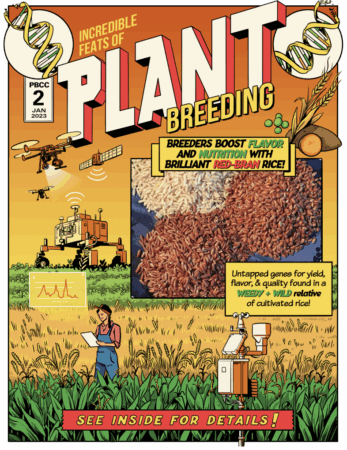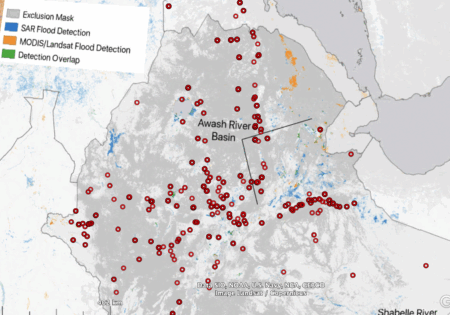- A primer on the USDA genebank in Pullman.
- Possible genebank in Indonesia. I could have sworn there was one already.
- Community genebank in Somalia. Surely not the only one.
- Garlic moves between genebanks. I’m sure there’s a reason.
- New enset products and processing methods are great, but is there a comprehensive genebank? I wish I could be sure.
- That goes for other “opportunity crops” and “forgotten foods” too.
How to revive your landraces
How can you get humble heirloom varieties of the humble potato back into cultivation? Well, fortunately, Potato News Today 1 has a handy step-by-step guide, which I reproduce verbatim below:
- Start with a story you can legally sell. In Europe/UK, use the conservation-variety route; in North America, lean on certified seed suppliers and Indigenous stewardship agreements.
- Source clean, traceable stock. CIP and the U.S. Potato Genebank maintain indexed, disease-tested material; combine with reputable local seed houses.
- Pilot with chefs and specialty retail. Early-season launches with menu credit and a farm feature move the needle.
- Package the provenance. PDO/PGI examples like Jersey Royal and Papas Antiguas de Canarias show how origin, agronomy, and micro-harvest rituals create value.
- Engineer storage for shape and use. Follow the curing/holding guidance above.
- Ride the calendar. Tie launches and media to the International Day of Potato (30 May) or to local potato festivals.
Sounds pretty sensible, and applicable to other crops as well, I suspect, with a little tweak here and there.
The article also has a list of case studies. This doesn’t include any examples from Italy, but coincidentally a recent paper describes just such a thing. Which maybe points to something that is missing from the Potato News Today playbook, to whit having lots of interesting characterization and other data on your heirloom landraces handy to help get them ready for prime time.
GRIN-U tackles breeding
 The latest GRIN-U newsletter points to a really nice series of infographics from the USDA’s Plant Breeding Coordinating Committee that I didn’t know about. But there’s a whole lot more. Explore away.
The latest GRIN-U newsletter points to a really nice series of infographics from the USDA’s Plant Breeding Coordinating Committee that I didn’t know about. But there’s a whole lot more. Explore away.
Before the flood
So, three years back, I posted about the floods in Pakistan, and how genebanks could potentially help farmers recover any crop diversity they lost because of them. But wouldn’t it be even better if the danger of flooding could be predicted? That way crop diversity from at-risk areas could be collected, if not already in genebanks, and multiplied up ready to be distributed should disaster strike.
Well, a recent paper does just that, using AI, no less: “We use our model predictions to identify historically flood-prone areas in Ethiopia and demonstrate real-time disaster response capabilities during the May 2024 floods in Kenya.”
I’ve managed to geo-reference a screen grab of the Ethiopia map provided in the paper using MapWarper, import it into Google Earth, and add the locations of sorghum landraces as reported in Genesys. Here’s what I got.
Unlike in the Pakistan example, there’s not much in the way of genebank accessions from areas of Ethiopia that are particularly at risk from flooding, it seems from this. However, Genesys does not (yet) include geographic provenance data for sorghum from the national genebank of Ethiopia. The 4000-odd sorghum accession from Ethiopia currently in Genesys are conserved at ICRISAT.
Brainfood: Defining domestication, Pig domestication, Archaeological orphan crops, Levant Neolithic causes, Altiplano agricultural origins, Irish cattle, Islamic Green Revolution, Ancient fish DNA, Ancient Chinese rice
- A universally applicable definition for domestication. Domestication is just evolution in anthropogenic environments.
- Early evidence for pig domestication (8,000 cal. BP) in the Lower Yangtze, South China. Evolution in anthropogenic environments can follow different pathways.
- Orphan crops of archaeology-based crop history research. Some crops are also neglected by archaeologists. Maybe because they weren’t domesticated enough?
- Catastrophic fires and soil degradation: possible association with the Neolithic revolution in the southern Levant. Domestication was caused by lightning.
- Altiplano agricultural origins was a process of economic resilience, not hardship: Isotope chemistry, zooarchaeology, and archaeobotany in the Titicaca Basin, 5.5-3.0 ka. Farming was not caused by anything so traumatic as lightning on the Altiplano.
- Changing human-cattle relationships in Ireland: a 6000-year isotopic perspective. Open land management of cattle in the Iron Age led to their central position in Irish culture. Maybe lightning was involved in clearing the land?
- Re-thinking the ‘Green Revolution’ in the Mediterranean world. The impact of the Islamic Green Revolution was down to more than just new crops and irrigation. Bit like the modern Green Revolution then?
- Roman Atlantic garum: DNA confirms sardine use and population continuity in north-western Iberia. You can characterize and compare old fish remains based on the DNA that survived fermentation at the bottom of ancient salting vats.
- Exploration of crop germplasm resources knowledge mining in Chinese ancient books: a route toward sustainable agriculture. You can characterize and compare old rice varieties based on the descriptions that survived in ancient chronicles. Maybe pig varieties too?
